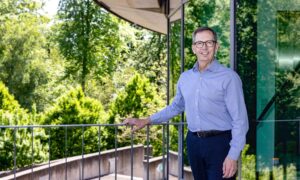
Transferable skills

As a research technician in EMBL’s Bork Group, Diënty Hazenbrink is used to working with the tiny creatures that accompany us in great numbers – the microbes that live in our guts. Hazenbrink’s work focuses on how the community of gut microbes – the gut microbiome – differs between healthy people and people who have liver disease.
The image above shows Hazenbrink working in a special biosafety cabinet that allows her to manipulate samples of gut bacteria in the absence of oxygen – a condition that gut microbes favour.
Beyond the walls of the lab, Hazenbrink enjoys taking her camera to catch the wildlife in the fields and forests surrounding EMBL Heidelberg. Recently, she observed a European goldfinch (left) and a hare (right) – although it’s not entirely clear who was observing whom more closely.
A European goldfinch (left) and a hare (right), which Diënty Hazenbrink observed in the fields and forests surrounding EMBL Heidelberg. Credit: Diënty Hazenbrink/EMBL
For molecular biology research and animal photography, overlapping sets of skills come in useful. Studying microbes in the lab requires a steady hand, close observation, and attention to detail – as well as patience. The same skills belong to the core repertoire of a wildlife photographer. Hazenbrink’s photographs demonstrate that she has successfully transferred these skills between lab bench and countryside.




